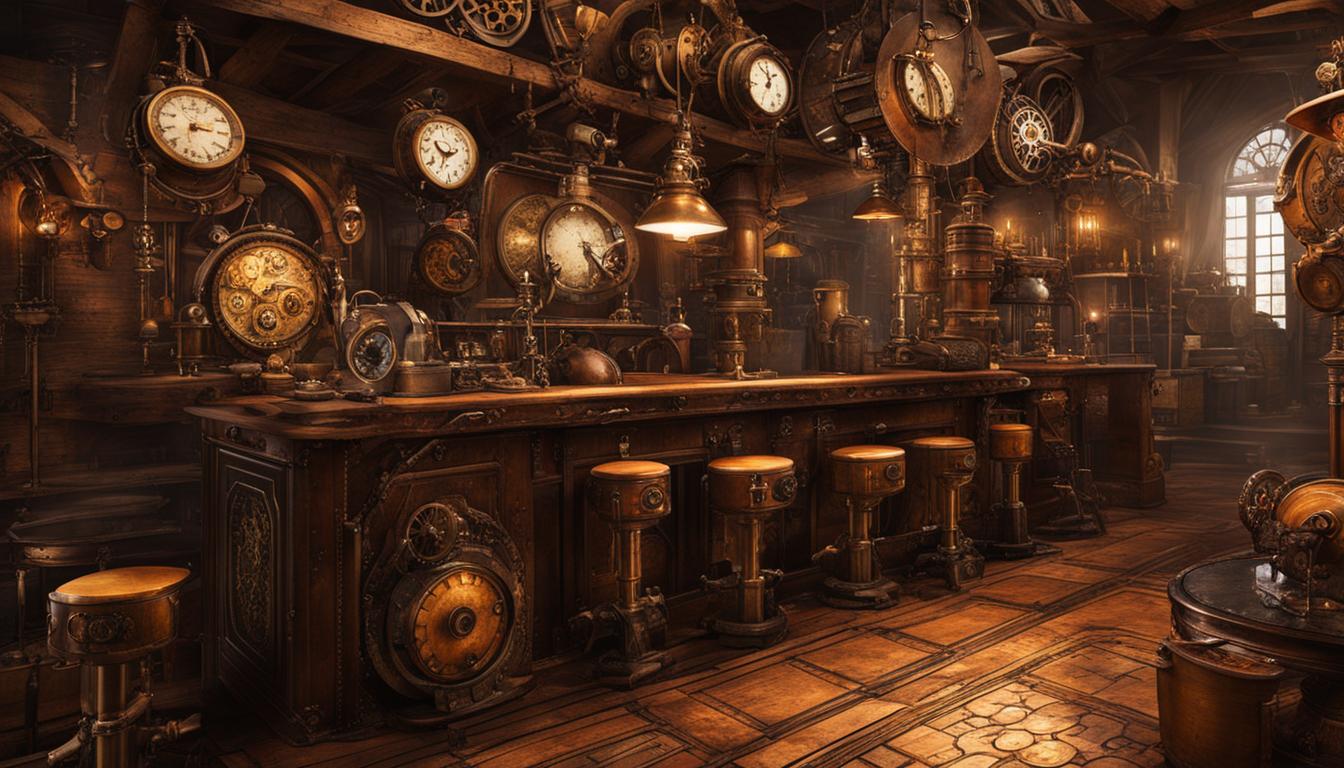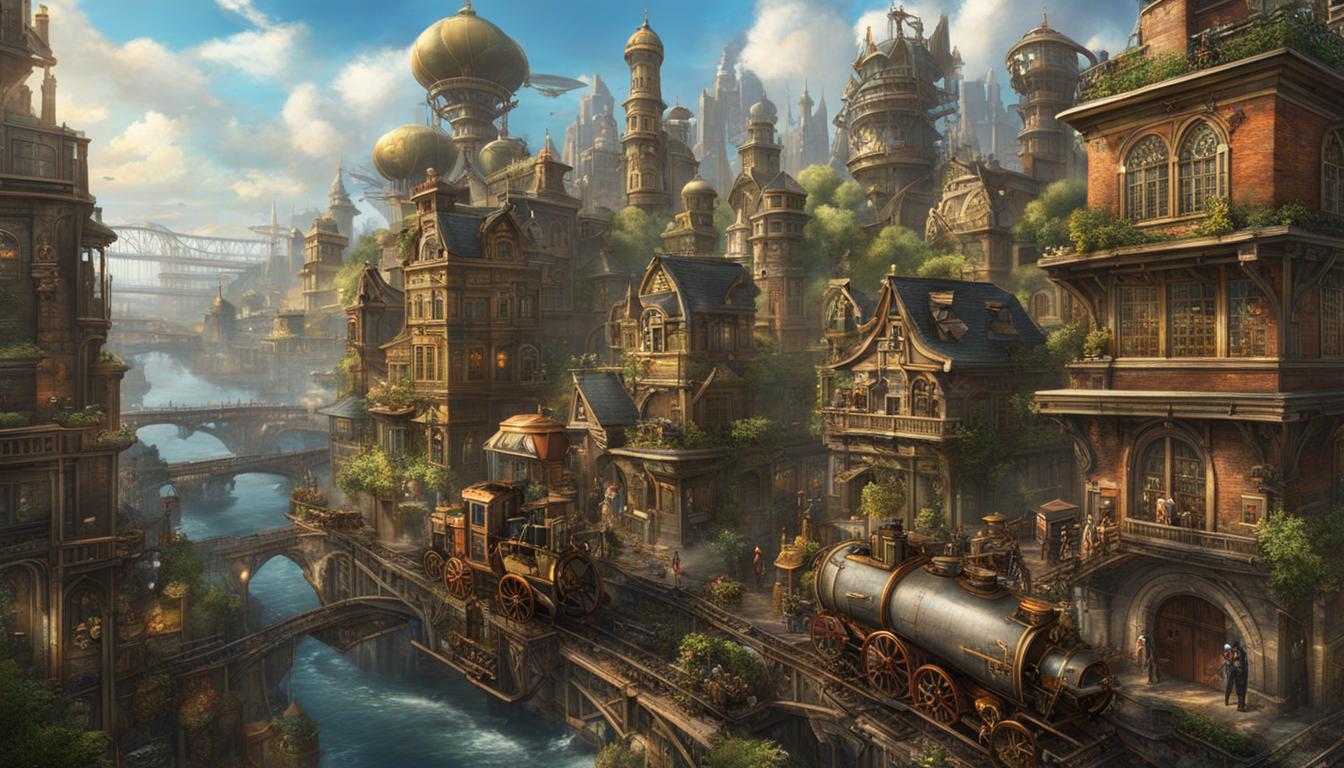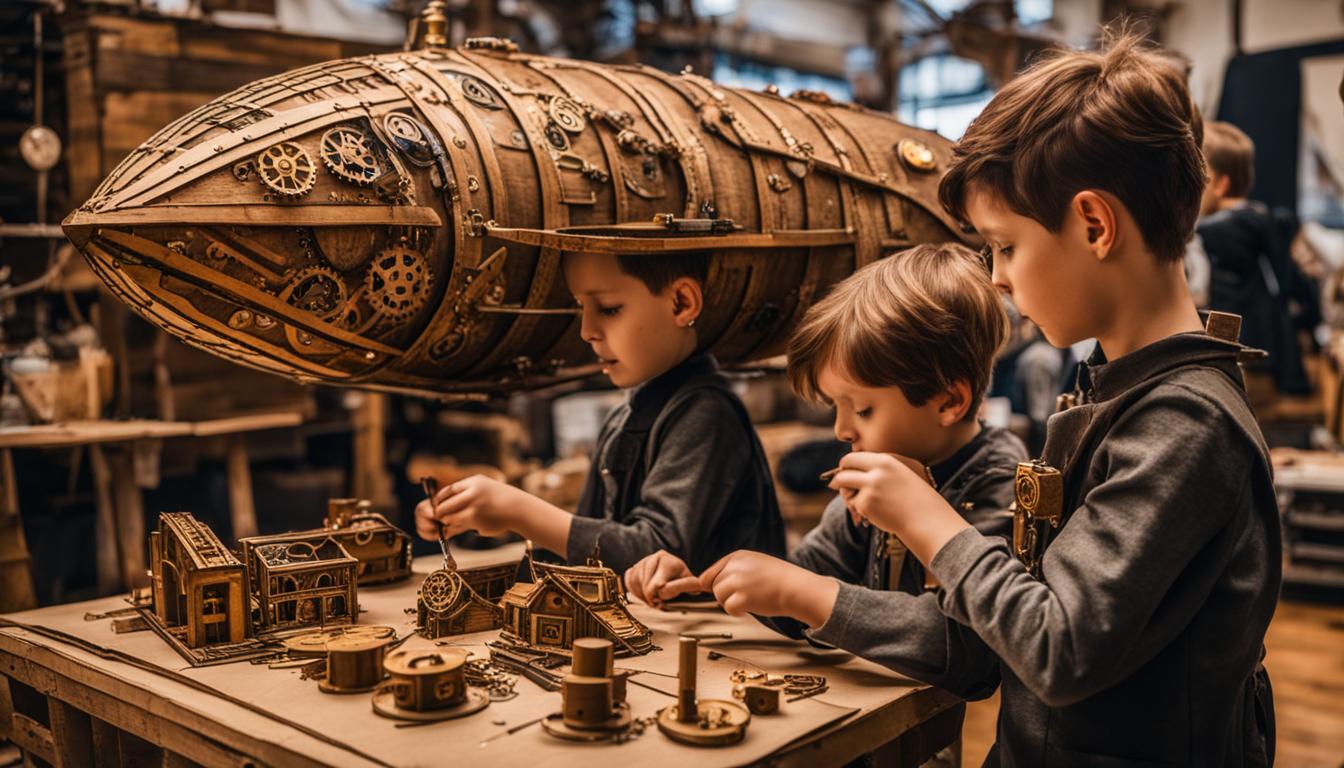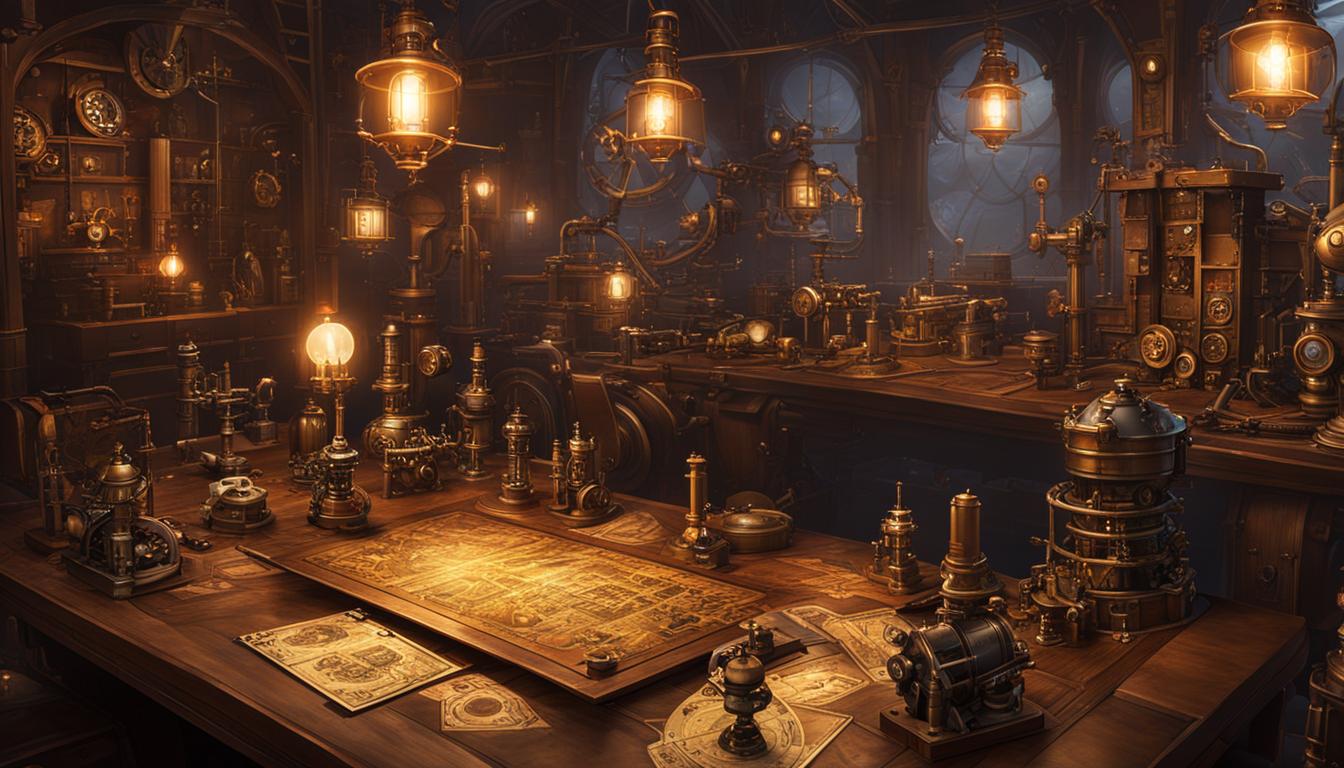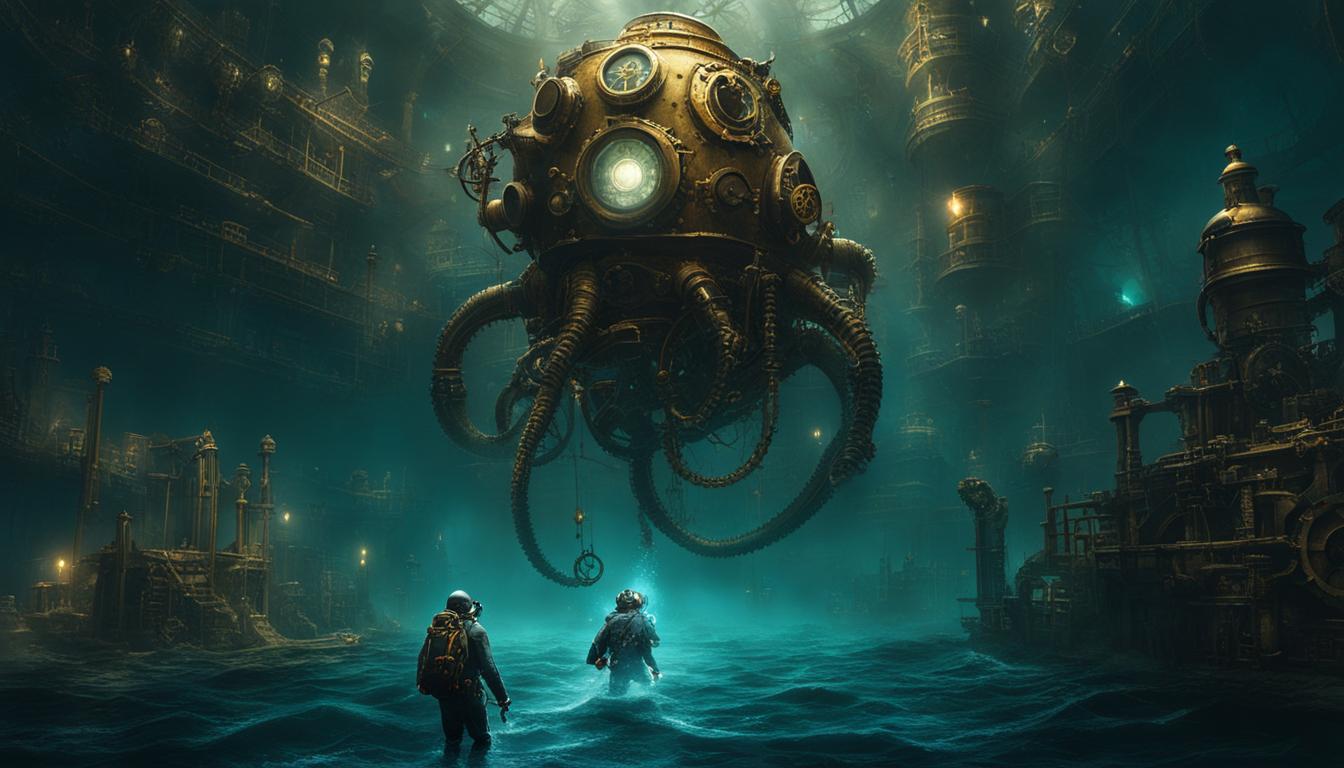Steampunk subcultures have captivated the hearts and imaginations of enthusiasts around the world. With its roots in the 1980s, this underground style emerged as a fusion of Victorian elegance and Jules Verne’s retrofuturism. From its humble beginnings as a protest against the overwhelming presence of smartphones and social media, steampunk has evolved into a vibrant and diverse subculture that encompasses music, film, design, and fashion.
Steampunk enthusiasts gather at tea parties and time traveler’s balls, adorned in attire inspired by the extravagant age of dirigibles, steam locomotives, and brass diving bells. The style incorporates elements of 19th-century fashion intertwined with post-apocalyptic warrior aesthetics, such as brass goggles, pulley wings, and clockwork pendants.
Influenced by literary works like Jules Verne’s thrilling adventures and H.G. Wells’ iconic stories, as well as films like “The City of Lost Children” and “Brazil,” steampunk has captured the attention of popular culture. Its impact can be seen in music videos, stage shows, and runway displays, solidifying its place as a style that continues to inspire and transcend.
Key Takeaways
- Steampunk originated in the 1980s as a protest against smartphones and social media.
- It combines elements of Victorian fashion with post-apocalyptic warrior aesthetics.
- Inspired by literature and film, steampunk has made its mark on popular culture.
- Steampunk subcultures embrace music, film, design, and fashion.
- Enthusiasts gather at events like tea parties and time traveler’s balls to celebrate steampunk culture.
The Colors of Steampunk: An Overview
Steampunk is a subculture known for its distinct and captivating visual aesthetic. One of the key elements that contribute to the unique charm of steampunk is its carefully curated color palette. Drawing inspiration from Victorian and industrial influences, the colors used in steampunk evoke a sense of nostalgia and adventure.
In steampunk, various shades of brown, black, and deep red or blue are commonly used. These earthy and rich tones are reminiscent of the Victorian era and the industrial revolution. Additionally, metallic colors like brass, copper, and iron play a significant role in steampunk fashion and design, symbolizing the mechanical and steam-powered nature of this retro-futuristic subculture.
To create a sepia-style tone that transports us back in time, lighter shades of brown and copper are often applied, giving a vintage and aged appearance to the overall aesthetic. Alongside the dominant brown tones, steampunk also incorporates complementary colors like black, white, and cream to add contrast and depth. This careful arrangement of colors helps to enhance the visual appeal of steampunk fashion and artwork.
While the traditional steampunk color palette is predominantly centered around earthy tones, there have been exciting variations and offshoots that introduce brighter colors to the mix. Steampunk subgenres such as “Clockwork Carnival” or “Neo-Victorian Fantasy” embrace more vivid hues like red, blue, and yellow, bringing a pop of vibrancy and energy to the steampunk world. These variations showcase the versatility and creative possibilities within the steampunk subculture, allowing for personalized expressions of style and individuality.
| Color | Symbolism |
|---|---|
| Brown | Victorian elegance, warmth |
| Black | Mystery, power |
| Deep Red/Blue | Daring, adventure |
| Brass, Copper, Iron | Mechanical, industrial |
Steampunk’s color palette is not merely a visual choice; it holds symbolic significance as well. Each color represents different aspects of the steampunk ethos, from the elegance of the Victorian era to the excitement of exploration and invention. The careful selection and arrangement of colors in steampunk fashion and design contribute to the overall immersive experience and evoke a sense of wonder and escapism.
“In steampunk, color is a language that speaks of the past, present, and future all at once. It’s a symphony of earthy tones, metallic accents, and vibrant highlights, weaving together an aesthetic tapestry that captures the imagination and transports us to a world full of curious contraptions and endless possibilities.”
– Steampunk Enthusiast
Future Fashion – at the Interface
Steampunk is not just a fashion style, but a fascinating exploration of the interface between the body and the world. It goes beyond mere aesthetics and embraces the concept of wearable technology as an interface for self-expression and data communication. In the world of steampunk, clothing becomes more than just a garment; it becomes a vehicle for expressing data and engaging with the environment.
Wearables in steampunk fashion serve as a means of expressing data and can be interpreted through the concepts of “fungibility” and “empathy”. Fungibility refers to the interchangeability of fashion items, allowing them to adapt to different contexts. In the steampunk subculture, fashion items are not limited to their original purpose but can be repurposed and mixed to create unique and personalized outfits. This flexibility is a reflection of the ever-evolving nature of fashion itself, where individuals can experiment and express their creativity through their clothing choices.
“Steampunk fashion is a fusion of aesthetics and functionality. It allows individuals to not only wear clothing but also communicate with the world around them.”
Empathy, on the other hand, explores the emotional connection between the wearer and the clothing. In steampunk, individuals have the opportunity to infuse their garments with personal meaning and story. Each piece of clothing becomes a canvas for self-expression, allowing the wearer to connect with their outfit on a deeper level. This emotional bond between the wearer and their clothing adds a unique dimension to the steampunk subculture, making it more than just a fashion trend but a lifestyle.
As the future of fashion unfolds, the concept of wearables as an interface will continue to evolve. The relationship between people, places, and things will become more interconnected, blurring the boundaries between fashion and technology. Users will have the opportunity to act as co-designers, shaping their own fashion experiences and expressing their individuality through clothing as a form of data expression.

Interface Aesthetics: Blending Fashion and Technology
In the world of steampunk, interface aesthetics play a crucial role. It’s not just about functionality but also about the seamless integration of technology into fashion. Whether it’s a pair of goggles adorned with intricate gears or a vest with built-in sensors, steampunk fashion creates a harmonious blend of the past and the future. This fusion of aesthetics and technology is what sets steampunk apart and makes it a unique subculture within the fashion world.
Humanistic Computing: The Future of Fashion
Humanistic computing is a concept that explores the intersection of technology and human experience. In the realm of steampunk fashion, this concept takes on new meaning, as users become active participants in shaping their clothing and its functionality. The future of fashion lies in the hands of the wearers, who can customize and personalize their garments to reflect their individuality and preferences. By embracing humanistic computing, steampunk fashion paves the way for a future where clothing becomes an extension of oneself, blurring the lines between user and designer.
Conclusion
In the vast world of steampunk subcultures, diversity reigns supreme. From the traditional steampunk enthusiasts who embrace the Victorian and retro-futuristic elements to the gothic steampunk devotees who fuse horror and industrial influences, there is a delightful array of styles and expressions to explore. Each subculture brings its unique elements to the overarching steampunk aesthetic, creating a tapestry of subcultural variations that captivate the imagination.
The color palette of steampunk plays a vital role in defining these subcultures. The rich tones of brown and the mesmerizing metallic accents set the stage for their distinct visual identities. But as steampunk continues to evolve, new offshoots and variations emerge, infusing different colors and themes into the mix. This constant innovation adds to the richness and diversity of the steampunk subcultural landscape.
Steampunk subcultures go beyond mere fashion statements. They provide a platform for self-expression, creativity, and a shared appreciation for the fusion of technology and aesthetics from the 19th century. It is in these subcultures that individuals find a sense of belonging, connecting with like-minded enthusiasts who celebrate the beauty of steampunk in their own unique ways.
FAQ
What is steampunk?
Steampunk is an underground style that emerged in the 1980s as a blend of Victorian style and Jules Verne retrofuturism.
What inspired the steampunk movement?
Steampunk served as a protest against smartphones and social media in the early 2000s and drew inspiration from the extravagant age of dirigibles, steam locomotives, and brass diving bells.
What are the key features of steampunk fashion?
Steampunk fashion is characterized by a fusion of 19th-century fashion with post-apocalyptic warrior elements, including brass goggles, wings made from pulleys, and clockwork pendants.
What are some notable influences on steampunk?
Steampunk draws inspiration from books by Jules Verne and H.G. Wells, as well as films like “The City of Lost Children” and “Brazil”.
How has steampunk gained popularity?
Steampunk gained popularity in the 2000s and continues to inspire fashion, music, and art, with notable appearances in music videos, stage shows, and runway shows.

